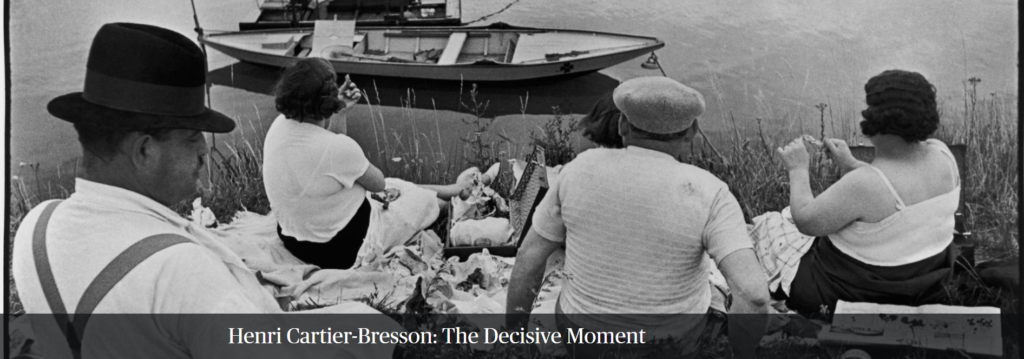
Who is Henri Cartier-Bresson?
Henri Cartier-Bresson, born August 22, 1908 Chanteloup, France, and died August 3, 2004, Céreste, was a French photographer whose humane, spontaneous photographs helped establish photojournalism as an art form.
His photographs impart spontaneous instances with meaning, mystery, and humour in terms of precise visual organization, and his work, although tremendously difficult to imitate, has influenced many other photographers. His photographs may be summed up through a phrase of his own: “the decisive moment,” the magical instant when the world falls into apparent order and meaning, and may be apprehended by a gifted photographer.
The Decisive Moment

Henri Cartier-Bresson is rightfully recognized as a master of the craft. He was one of the first true street photographers and artfully captured everyday life through the lens. But he also coined a term:
The “Decisive Moment”.
With it he described the exact instance when a unique event is captured by the photographer. When something that may never happen again is frozen in the frame. He said it best himself, in an iconic quote:
“To me, photography is the simultaneous recognition, in a fraction of a second, of the significance of an event as well as of a precise organization of forms which give that event its proper expression.”
Beyond “The Decisive Moment”, the title of his 1952 landmark monograph and philosophical theory on photographing as the artless art, Cartier-Bresson was a zealous geometrician and strictly adhered to only composing within the camera and never in the darkroom. His passion for visual harmony, humanity and the impermanence of reality focused by a classically trained eye allowed for the creation of an unrivalled body of historic imagery.
How did Henri Cartier become famous?
He was drafted into the film and photo unit of the French army in 1940 and was taken prisoner by the Germans that same year. After three years of imprisonment he escaped and began working for the French underground. In 1943 he made series of portraits of artists, including Matisse, Bonnard, and Braque. Through 1944 and 1945, Cartier-Bresson photographed the occupation of France and its liberation. In 1947 he co-founded the Magnum agency with David Seymour, and George Rodger. He spent the next twenty years traveling around the world, then received the Overseas Press Club Award four times; the ‘American Society of Magazine Photographers award’ in 1953; and the ‘Prix de la Société Française de Photographie’ in 1959
A few Iconic Artworks By Henri Cartier Bresson

Rue Mouffetard, Paris

Seville, Spain

Behind the Gare Saint-Lazare
What did Henri Cartier-Bresson discover?
In 1931, Cartier-Bresson discovered the hand-held Leica camera and was practically consumed by the new art form.

He was known for using only one camera, a Leica rangefinder, and one lens, a 50mm, for almost all of his life’s work. The Leica continued to be the go to device for photographers after World War II, especially for New York City photographers such as Roy De Carava, Lisette Model, William Klein, and Helen Levitt. Robert Frank, who is best known for his book The Americans (1959) and was the leading influence on street photographers of the succeeding generation, documented culture throughout the United States and in Europe.
